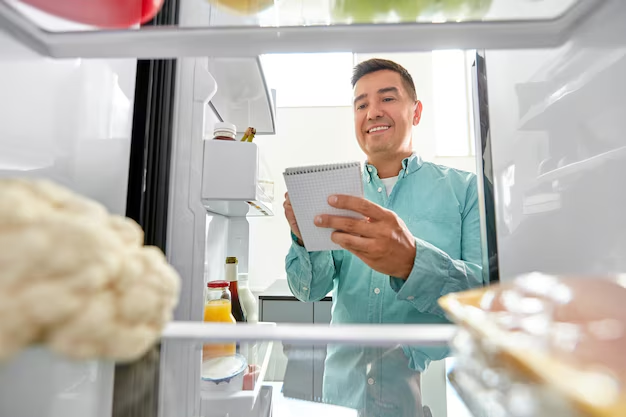Troubleshooting Ice-Making Issues in Your Whirlpool Refrigerator: Discover the Causes and Solutions
Picture this: it's a sweltering summer day, and you're gearing up to enjoy a cold drink. You open your Whirlpool refrigerator, reach for some ice, and to your dismay, the ice maker is on strike. If you've ever found yourself in this predicament, you're not alone. Many users face this conundrum, asking, "Why won't my Whirlpool refrigerator make ice?" This article will delve into the common causes of this issue, guide you through practical solutions, and provide valuable insights to help you keep your refrigerator’s ice maker in top shape. 🧊
Common Causes of Ice Maker Malfunction
Understanding why your Whirlpool refrigerator isn't producing ice is the first step to resolving the problem. Let's explore some of the usual suspects:
1. Water Supply Problems
A reliable water supply is crucial for ice production. Issues in this area can quickly halt your ice maker's operations.
- Frozen Water Line: An ice-clogged tube can prevent water from reaching the ice maker. This often happens when the freezer is set too cold.
- Kinked Water Line: Check for kinks or bends in the water line, which might restrict water flow.
- Water Inlet Valve Malfunction: This valve controls the water flow to the ice maker. If it’s faulty, it might not be letting water through.
2. Temperature Settings
Your refrigerator's and freezer's temperature settings can significantly impact its ice-making capabilities.
- Temperature Too High: If your freezer is set above 10°F (-12°C), it might not produce ice efficiently.
- Temperature Too Low: Conversely, if the temperature is set extremely low, parts of the water line can freeze.
3. Electrical or Mechanical Failures
Ice makers are complex systems with various components working together. If one part fails, it impacts the whole process.
- Faulty Motor or Gear Box: These are critical for ejecting ice cubes once they’re formed. Any malfunction can disrupt this process.
- Defective Control Board: The ice maker’s control board manages the ice-making cycle - any electrical fault here can stop the ice-making.
4. Ice Maker Assembly Issues
Sometimes the issue lies directly within the ice maker unit.
- Misaligned Arm: The arm detects if the ice bin is full. If misaligned, it might falsely signal the system to stop making ice.
- Ice Blockages: Unusual ice formations might block the chute, obstructing the regular flow of ice.
Step-by-Step Guidance to Fix Your Whirlpool Ice Maker
Now that we've identified potential problems, let's tackle how to fix these common issues. Here’s a structured plan to restore your ice maker to working condition.
1. Check and Adjust Water Supply
Inspect Water Lines:
- Ensure no kinks or bends are disrupting the flow.
- Disconnect the line and check for ice blockages if the line is frozen.
Examine the Water Inlet Valve:
- This can be tested using a multimeter for continuity.
- If defective, replacement is usually necessary.
2. Regulate Temperature Settings
- Calibrate Your Freezer Temperature:
- Set the freezer to the recommended 0°F (-18°C).
- Avoid frequent opening and closing of the freezer as it affects the temperature stability.
3. Test Electrical and Mechanical Components
Ice Maker Motor and Gear Box:
- Listen for unusual sounds indicating wear or failure.
- Professional assessment may be necessary if you suspect electrical issues.
Examine the Control Board:
- Consider resetting the appliance to eliminate simple electronic glitches.
4. Maintenance and Cleaning
- Defrost and Clean the Ice Maker:
- Regularly defrost to prevent ice build-up in the system.
- Clean any ice residue blocking the maker or chute.
5. Check the Ice Maker Assembly
- Inspect the Arm:
- Ensure it's in the correct position and free from obstruction.
- Move gently if stuck, avoiding excessive force that could break it.
Preventive Measures for a Long-lasting Ice Maker
Taking care of your ice maker involves more than just fixing issues as they arise. Implementing preventive practices will help maintain its efficiency:
- Regular Maintenance Checks: Periodically inspect all parts, especially after prolonged non-use.
- Effective Cleaning: Clean the ice mold and chute frequently to prevent mold and bacteria build-up.
- Optimal Use: Avoid overstocking the freezer as it affects air circulation and temperature regulation.
Summary of Key Steps to Troubleshoot and Maintain Your Ice Maker
Here’s a compact summary 🌟 to help you remember the essential actions when dealing with ice maker issues:
- 🔍 Water Line: Check for kinks or freeze-ups.
- 🌡️ Temperature: Set freezer to 0°F for optimal functioning.
- ⚙️ Components: Test motors, valves, and control panel.
- 🛠️ Maintenance: Regular cleaning & defrosting.
- ✔️ Assembly: Arm and chute position checks.
Concluding Insights on Your Whirlpool Refrigerator Ice Maker
Owning a Whirlpool refrigerator is typically a smooth experience, enhanced by its ability to deliver ice on demand. Yet, like any appliance, your ice maker may need occasional attention. Ensuring an unrestricted water supply, maintaining appropriate temperatures, performing regular cleaning, and providing timely servicing are key to resolving and even preventing malfunctions. By taking these steps, you'll not only fix the current issue but also extend the lifecycle of your refrigerator's ice maker, keeping those cold drinks at the ready for any occasion.
Keep this guide handy, and you'll have the know-how to handle your ice maker hiccups with ease and confidence. Cheers to refreshing drinks and a smoothly running Whirlpool refrigerator! 🧊🥤
